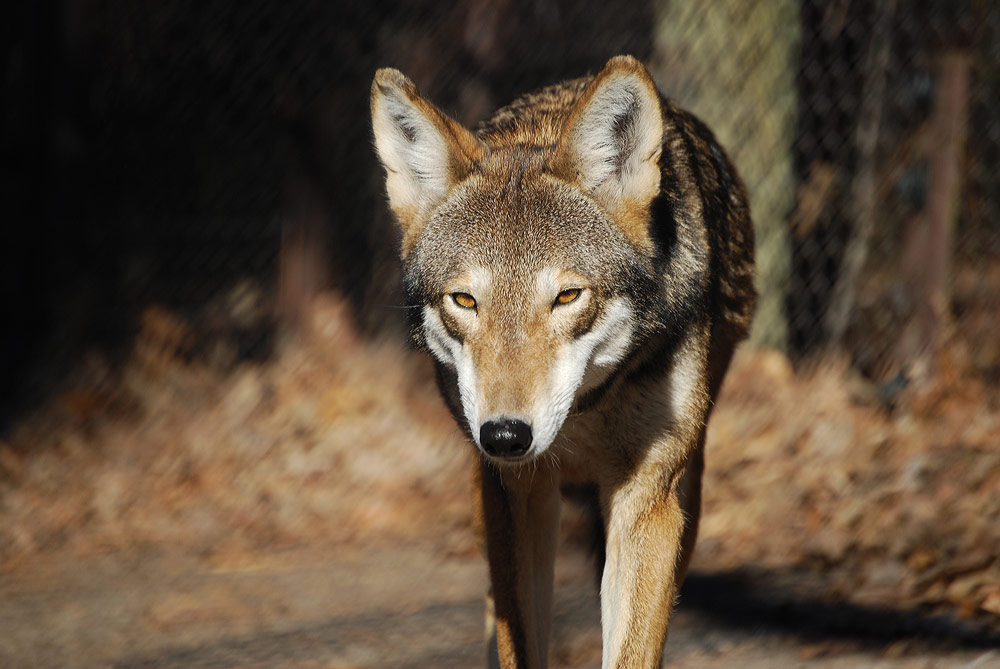Category:
MammalsAbout
American Red Wolf
In colonial times, American Red Wolves (Canis rufus) ranged throughout the southeast. Today they are one of the most endangered mammal in North America. Visitors to the Virginia Living Museum can enjoy watching red wolves along the museum’s outdoor boardwalk. The red wolves are part of a federal Species Survival Plan.
The red wolf gets its name from the reddish color around its head, ears and legs. However, its coloring can range from light tan to black. It is intermediate in size between the grey wolf and the coyote.
One American Red Wolf, a male, currently lives at the Virginia Living Museum. The male wolf has been a resident of the museum since birth and lived in the exhibit with two other male wolves.
Historically, American Red Wolves ranged all over the southeastern United States. By the 1970s, all that remained was a small remnant population of red wolves in southeastern Texas and southwestern Louisiana. Biologists captured all the wolves in this remnant wild population and began a captive breeding program at Point Defiance Zoo and Aquarium in Tacoma, Wash.
In 1980 the species was declared extinct in the wild. Much of the decline of this large predator was due to persecution by humans and loss of habitat.
Beginning in 1987 captive-bred red wolves were reintroduced to the Alligator River National Wildlife Refuge in eastern North Carolina. Today there are about 100 red wolves divided into 20 packs or family groups across a designated 1.5 million-acre five-county region that includes three national wildlife refuges. By winter of 2002, all the wolves in the wild population were born in the wild.
American Red Wolves are being reintroduced into the wild to prevent extinction of the species and to help restore the ecosystems in which they once occurred. Predators maintain the balance and health of ecosystems by controlling populations size prey species and removing unhealthy animals. Red wolves prey on white-tailed deer, raccoons and small mammals, such as rabbits, rodents and nutria.
In addition to the wolves in the wild, there are also about 200 red wolves in captivity at 36 zoos and museums around the country (including the VLM) as part of the federal Red Wolf Recovery captive breeding program.
Help pay for my food and care at the Virginia Living Museum by adopting me today.






